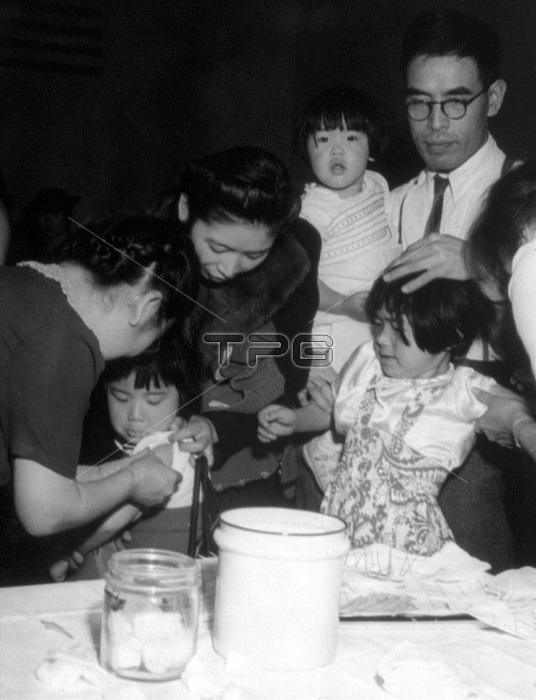
Entitled: "Evacuees of Japanese descent being inoculated as they register for evacuation." The internment of Japanese-Americans during WWII was the forced relocation and incarceration in camps of 110,000-120,000 people of Japanese ancestry (62% of the internees were US citizens) ordered by President Roosevelt shortly after Japan's attack on Pearl Harbor. Japanese-Americans were incarcerated based on local population concentrations and regional politics. The internment is considered to have resulted more from racism than from any security risk posed by Japanese-Americans. Those who were as little as 1/16 Japanese and orphaned infants with "one drop of Japanese blood" were placed in the camps. The facilities were the military-run Wartime Civil Control Administration Assembly Centers and the civilian-run War Relocation Authority Relocation Centers, which are generally referred to as "internment camps." Scholars have urged dropping such euphemisms and refer to them as concentration camps and the people as incarcerated. Nine of the ten WRA camps were shut down by the end of 1945, although Tule Lake, which held "renunciants" slated for deportation to Japan, was not closed until March 20, 1946. No photographer credited, 1942.
| px | px | dpi | = | cm | x | cm | = | MB |
Details
Creative#:
TOP22176395
Source:
達志影像
Authorization Type:
RM
Release Information:
須由TPG 完整授權
Model Release:
No
Property Release:
No
Right to Privacy:
No
Same folder images:

 Loading
Loading